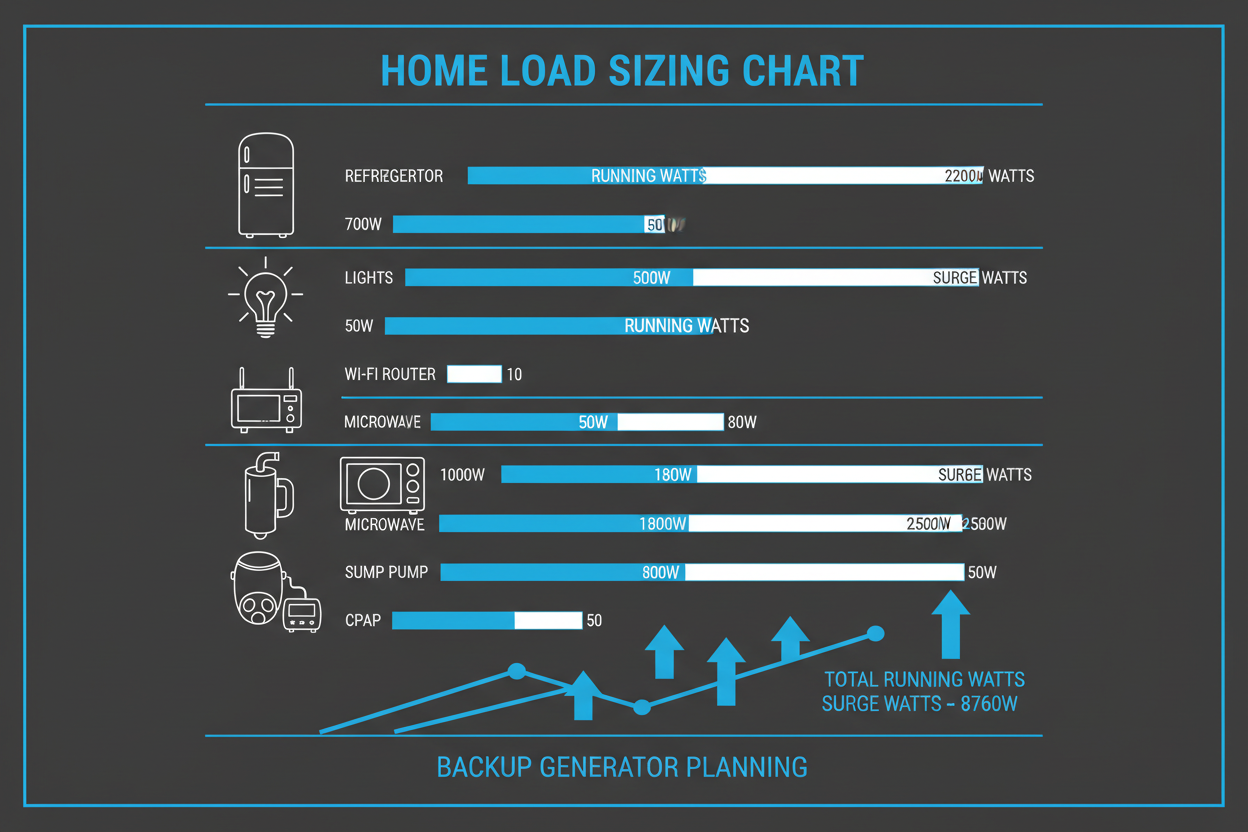How to Size a Home Backup Generator Correctly
Choosing the correct generator size ensures reliable performance during outages. Proper load planning prevents overload and keeps essential appliances running safely.
Homeowners should evaluate running watts, surge watts, and total expected load. These factors determine which generator class fits their backup needs.
Understanding Running vs Surge Watts
Running watts describe continuous power requirements. Surge watts reflect temporary startup spikes for motors and compressors.
Oversizing slightly helps maintain stability when high-surge devices activate. This approach improves reliability in winter storms and summer outages.

Essential Household Wattage Chart
Many home appliances fall within predictable watt ranges. Reviewing typical values helps homeowners create accurate outage plans.
- Refrigerator: 150–300W (600–1200W surge)
- Sump pump: 800–1200W (1500–2500W surge)
- Microwave: 900–1200W
- Space heater: 1200–1500W
- LED lighting: 5–15W each
- Wi Fi router: 10–30W
- CPAP machine: 30–80W
- Phone charging: 10–20W
Small Backup Generators: 1000–2000W
Small generators power essential survival loads. They work well for compact homes, apartments, and short outages.
- LED lighting
- Routers and phones
- Small fans
- Minimal refrigeration
Medium Backup Generators: 2400–4500W
Mid-size units offer balanced capability and portability. Many homeowners select this range for typical outage conditions.
- Refrigerators and lighting circuits
- Microwaves and fans
- CPAP machines
- Low-watt heaters
Large Backup Generators: 5000–8000W
Larger generators support higher-surge devices and multiple rooms. They provide strong startup power during long outages.
- Sump pumps and well pumps
- Multiple refrigerators
- Large microwaves
- Portable heaters
Building a Safe Load Plan
Keeping running load below seventy percent reduces stress on the generator. This guideline also extends engine life and improves fuel efficiency.
- Group low-watt devices together
- Stagger high-surge appliances
- Use a transfer switch for safer circuits
Conclusion
Correct generator sizing ensures dependable home backup performance. Understanding wattage needs helps families stay prepared for unpredictable grid failures.
